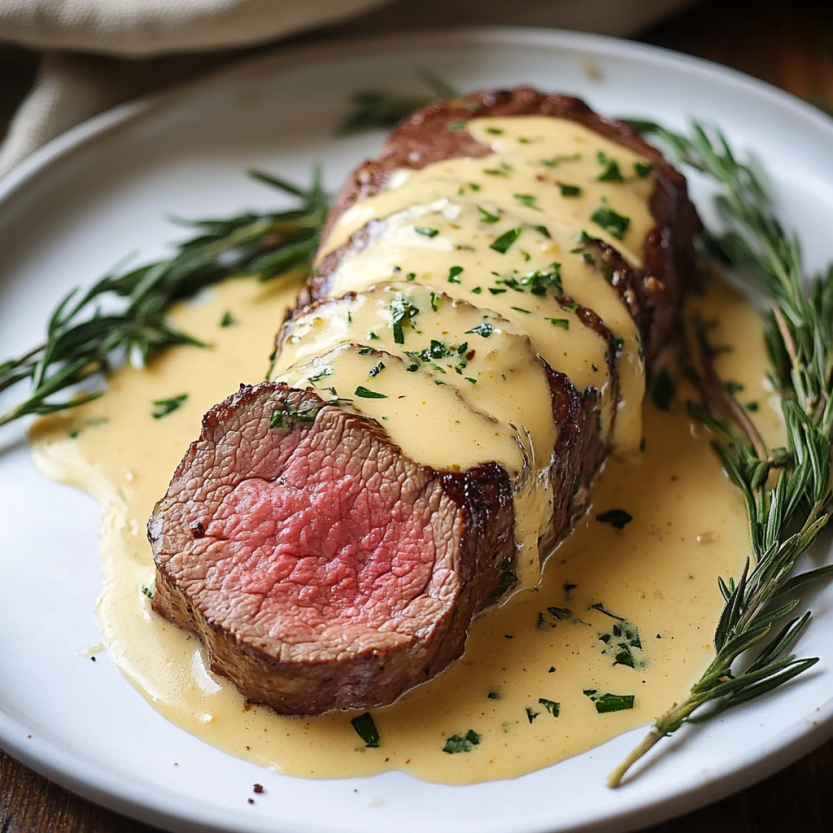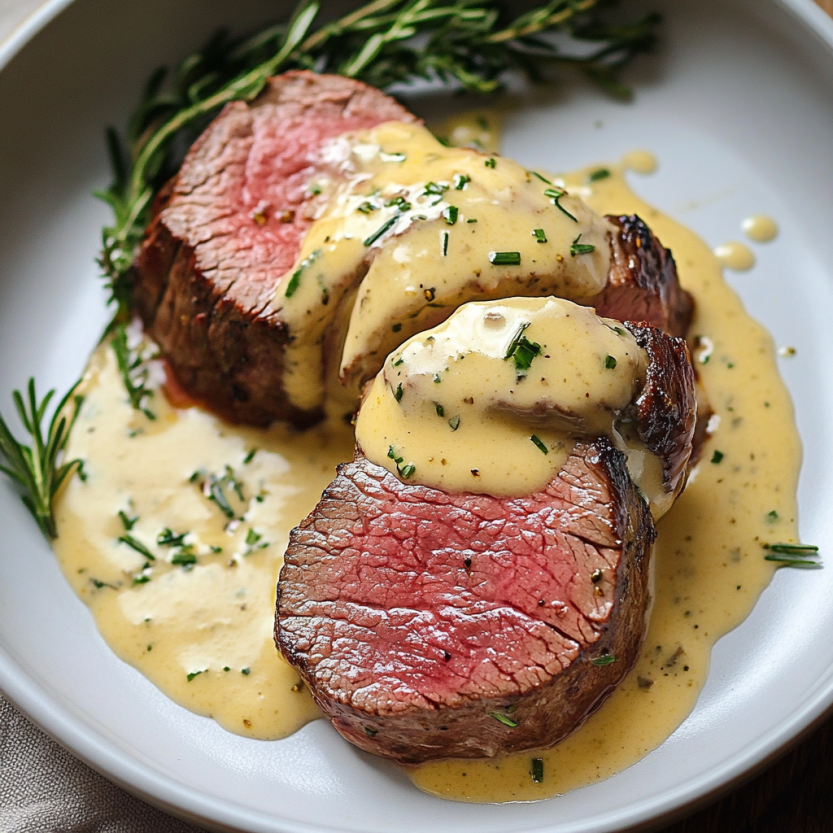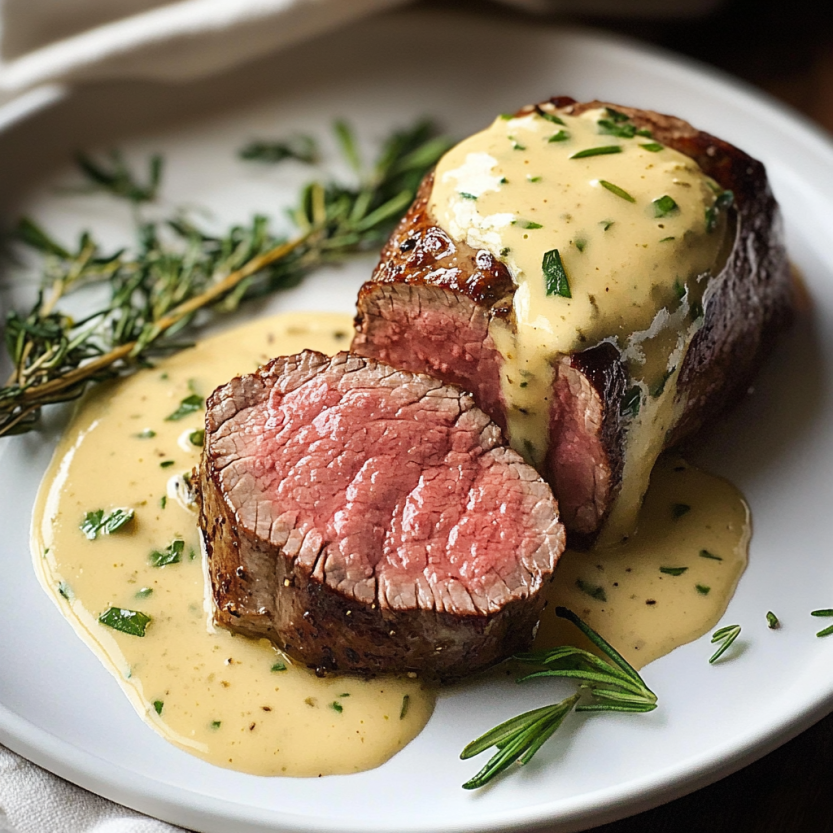 Save
Save
This show-stopping beef fillet with creamy Bearnaise sauce is my go-to dish when I want to impress without stressing in the kitchen. You get restaurant-level tenderness and a sauce that tastes fancy but comes together fast. Every holiday and celebration in my house means this gleaming roast on the table — nobody can resist that herby, buttery Bearnaise pooled over juicy slices.
I first made this for a family birthday and everyone was silent by the third bite except for the happy sighs. The sauce became an instant favorite and I get requests for it every time.
Ingredients
- Beef fillet: about four pounds choose a whole tenderloin that feels firm and bright red for juiciness and tenderness
- Salt and pepper: adds core seasoning pat the beef dry so the crust develops well
- Egg yolks: for the Bearnaise these help emulsify and thicken the sauce
- White wine vinegar: brings a subtle kick and brightens the richness use a good quality vinegar for best results
- Unsalted butter: choose high-quality fresh butter for a sweet creamy base
- Fresh tarragon: leaves only theme flavor of Bearnaise pick tarragon that smells fragrant and looks bright green
- Kitchen twine for tying: keeps shape even cooking ask the butcher to trim and clean the fillet for you
Step-by-Step Instructions
- Prepare the Beef:
- Let the beef come to room temperature for even cooking. Trim off the tapered end to create two pieces of similar width for even doneness. Tie them securely with kitchen twine so they hold their shape.
- Season and Sear:
- Pat your beef dry and season generously with salt and pepper all over. Heat a large frying pan over high heat until just smoking. Sear each piece on every side to build a deeply golden crust. This step adds tons of flavor and locks in juices.
- Roast the Beef:
- Place the seared fillets on a baking tray. Roast in a preheated oven at four hundred degrees Fahrenheit. For medium rare cook about twenty five minutes. For well done go up to thirty minutes. Use a thermometer if you can. The center should feel soft and springy for medium rare.
- Rest the Meat:
- Take the beef out and loosely cover with foil. Let it rest ten to fifteen minutes. The juices redistribute so every slice is moist and flavorful and the temperature continues to rise a bit as it sits.
- Make the Bearnaise Sauce:
- Melt unsalted butter in a small saucepan just until bubbly. Carefully pour off the clear yellow part and leave the milky solids behind. In a small blender or with an immersion blender blend together egg yolks and white wine vinegar until the mixture looks pale and creamy. While the blender runs slowly stream in the hot butter to create a pale thick sauce that almost triples in volume. Stir in plenty of chopped tarragon and salt to taste.
- Finish and Serve:
- Slice the beef into thick slabs and arrange on a platter. Spoon over that glorious Bearnaise sauce and serve the rest in a bowl alongside for people who want extra. This makes any night feel like a celebration.
 Save
Save
Every time I open the fresh tarragon for the sauce I remember my grandmother’s herb garden. She always sent me snipping with a tiny pair of scissors and the scent brings me right back to her kitchen watching her turn simple butter and yolks into something incredible.
Storage tips
Store leftover beef fillet tightly covered in the fridge and enjoy cold or gently reheated within three days. Bearnaise sauce is best fresh but can be refrigerated in a glass jar for up to one day. To rewarm the sauce heat it very gently over barely simmering water whisking constantly to prevent splitting.
Ingredient substitutions
If you cannot find fresh tarragon try chervil or a mix of parsley and a pinch of dried tarragon for a similar note. White wine vinegar can be swapped for a splash of champagne vinegar. If you want a slightly less rich sauce whole eggs can replace one yolk without breaking the texture.
 Save
Save
Serving suggestions
This beef and Bearnaise make a perfect match with crispy roast potatoes or a simple green salad. For a special touch serve alongside grilled asparagus or sautéed mushrooms. Leftover cold slices are excellent in sandwiches or tucked into a warm baguette with arugula.
Cultural or historical context
Bearnaise sauce is a classic French spin on hollandaise invented in the 1800s in honor of the region of Béarn. It is now a steakhouse favorite thanks to tarragon’s delicate bite. The combination of tender beef fillet and Bearnaise is a French tradition for celebratory occasions and always feels special.
Recipe Questions
- → How do I achieve a tender beef fillet?
Bring the meat to room temperature and sear for a golden crust, then roast at the right temperature and allow it to rest before slicing.
- → What is the ideal doneness for beef fillet?
Medium rare is recommended, cooked to 55C/130F for a soft and springy bite with a pink center. Adjust cooking time for preferred doneness.
- → Can I prepare Bearnaise sauce ahead of time?
Bearnaise sauce is best served fresh, but it can be kept warm for a short period or gently reheated if needed. Avoid boiling to preserve texture.
- → Why cut the fillet into two pieces?
Dividing the fillet helps achieve even cooking, as the thickness varies along the length of the cut. This prevents overcooking the thinner end.
- → What herbs can I use instead of tarragon in Bearnaise?
Fresh chervil or parsley can be used as alternatives, but tarragon imparts the signature flavor. Experiment to suit your taste.